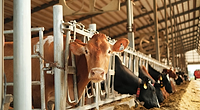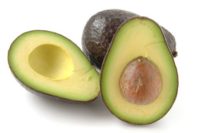FDA Scientists in Puerto Rico Seek Faster Screening for Foodborne Pathogens

Source: FDA Voice blog
Pictured at left is FDA's San Juan Laboratory team. Back row (left to right): Joseph Bloom, Osvaldo Rosario, Fernando González. Front row (left to right): Miguel A. Martínez and LCDR José Moreno.
Whether an outbreak of foodborne illnesses is caused by Listeria in cantaloupe, E.coli in salad or Salmonella in peanut butter, the faster the disease-causing bacteria are identified, the more illnesses can be averted.
Last year scientists based in FDA’s San Juan Laboratory were endowed with seed funding through a [Department of] Health and Human Services HHSignite award to adapt traditional chemistry methods for the detection of foodborne pathogens. HHSignite (beta) is an internal competitive seed-funding opportunity to test new and unconventional ideas within HHS.
The team is being led by LCDR José Moreno of the U.S. Public Health Service, a microbiologist in FDA’s San Juan Laboratory. Working with Moreno on this project are Joseph Bloom, Ph.D., San Juan Laboratory science advisor, supervisory chemists Adalberto Cajigas and Héctor Espinet, science advisor Osvaldo Rosario, Ph.D., chemist Miguel A. Martínez, and staff fellow Fernando González, Ph.D. FDA’s San Juan scientists were among 13 teams within HHS to receive such funding when Secretary Sebelius announced the finalists in June 2013.
Their proposal is to assess the utility and practicality of coupling CE-MS, which stands for capillary electrophoresis coupled with a mass spectrometer, that promises to be the workhorse of many analytical chemistry laboratories for use in identifying pathogenic microorganisms through the identification of specific proteins associated with pathogenicity by their fragmentation patterns. This essentially identifies specific “fingerprints” for disease-causing bacteria, such as E. coli, Salmonella, Listeria and Staphylococcus, in foods.
The research undertaken by Moreno and his team could result in faster screening methods for a wide array of pathogens as part of FDA’s food safety and food defense programs.
What’s next?
The San Juan team is continuing their research on this innovative screening tool to reduce testing times even more, and coordinating their efforts with their scientific colleagues in our Office of Regulatory Affairs and in our Center for Food Safety and Applied Nutrition on the mainland to protect the safety of the U.S. food supply.
Editor's Note: This blog post was written by Nilda Villegas, a public affairs specialist in the San Juan District Office, part of FDA’s Office of Regulatory Affairs.
Looking for a reprint of this article?
From high-res PDFs to custom plaques, order your copy today!





